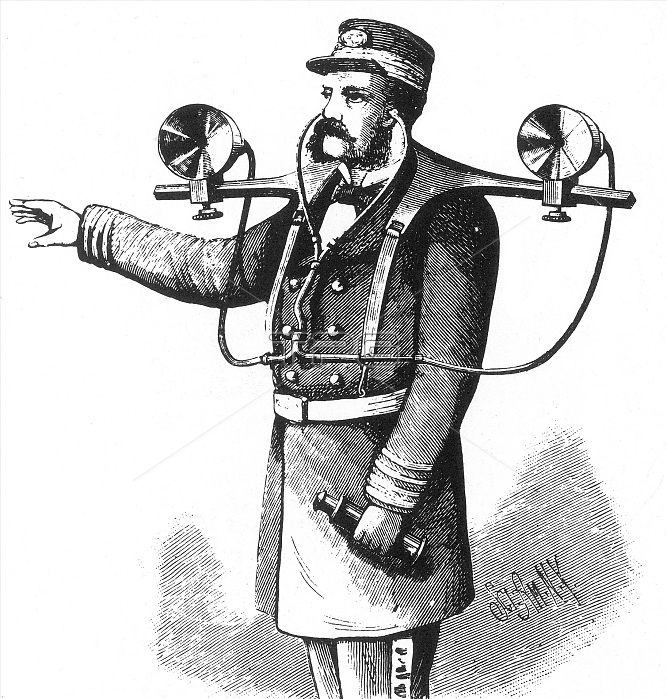
Detail of a rendering of Mayer's Topophone that appeared in the July 3, 1880 issue of Scientific American. The aim of the topophone, which was invented and patented by Professor A. M. Mayer, last winter, is to enable the user to determine quickly and surely the exact direction and position of any source of sound. The topophone consists of two resonators (or any other sound receivers) attached to a connecting bar or shoulder rest. The sound receivers are joined by flexible tubes, which unite for part of their length, and from which ear tubes proceed. One tube, it will be observed, carries a telescopic device by which its length can be varied. When the two resonators face the direction whence a sound comes, so as to receive simultaneously the same sonorous impulse, and are joined by tubes of equal length, the sound waves received from them will necessarily re-enforce each other and the sound will be augmented. If, on the contrary, the resonators being in the same position as regards the source of sound, the resonator tubes differ in length by half the wave length of the sound, the impulse from the one neutralizes that from the other, and the sound is obliterated. From 1871 until his death in 1897, Alfred Mayer was a Professor of Physics at the Stevens Institute of Technology in Hoboken, New Jersey.
| px | px | dpi | = | cm | x | cm | = | MB |
Details
Creative#:
TOP22166699
Source:
達志影像
Authorization Type:
RM
Release Information:
須由TPG 完整授權
Model Release:
N/A
Property Release:
No
Right to Privacy:
No
Same folder images:

 Loading
Loading